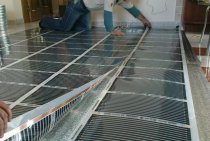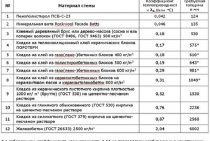burning coal
Underground fires can continue for long periods of time (months or years, in some cases up to several thousand years), until the smoldering layer is depleted. They can spread over large areas through mine workings and cracks in the rock mass. Since they are underground, they are extremely difficult to extinguish, which is not least due to the difficulty or impossibility of access to the combustion source.
Some coal seam fires are natural phenomena. Some coals may spontaneously ignite at temperatures below 100°C (212°F) with certain humidity and lump sizes. Wildfires (whether caused by lightning or otherwise) can ignite coal close to the surface, and the smoldering can spread through the seams, creating conditions for deeper seams to ignite. Prehistoric slag outcrops in the American West are the result of prehistoric coal burnings that left a residue that resisted erosion better than the matrix. Scientists estimate that Burning Mountain in Australia is the oldest known burning coal deposit, having been burning there for about 6,000 years.
There are thousands of active, unstoppable underground fires around the world, especially in China and India, where poverty, lack of government regulation, and unbridled development combine to threaten the environment. Modern layered mining opens smoldering coal seams to the air, resuming combustion.
Among the hundreds of underground fires in the United States, the most famous is in Centralia, Pennsylvania. Started burning in 1962. Today, other underground fires are active in the US, for example, in the city of Vanderbilt, also Pennsylvania (the state with the most underground fires).
Underground fires can start as a result of an accident, usually causing a gas explosion. Some underground fires started when authorities blew up illegal mining operations. Many recent mine fires have been started by people burning rubbish in pits near abandoned coal mines (as happened in Centralia, for example).
China's rural people in coal regions often mine coal for domestic use, abandoning workings when they are depleted, throwing rapidly flammable coal dust into the open air. Mapping China's coal fires from satellite photography revealed many previously unknown fires. There are several successful examples of fighting underground fires: in 2004, China managed to extinguish a fire in the Liuhuangou coal mine, near Urumqi in the Xinjiang region, which had been burning since 1874. The worst of the current fires are in the Uda coalfields in Inner Mongolia. China's coal fires burn 20-30 million tons of coal a year. The liquidation of underground fires in mines, as well as the rescue of people in Russia, is carried out by the VGChS
Where does the energy from the fuel come from?
We know that molecules are made up of atoms. In order to divide any molecule (for example, a water molecule) into its constituent atoms, it is required to expend energy (to overcome the forces of attraction of atoms). Experiments show that when atoms combine into a molecule (this is what happens when fuel is burned), energy, on the contrary, is released.
As you know, there is also nuclear fuel, but we will not talk about it here.
When fuel is burned, energy is released. Most often it is thermal energy. Experiments show that the amount of energy released is directly proportional to the amount of fuel burned.
When to put food on the grill
When the coal briquettes are covered with a thin layer of ash (and the charcoal is hot around the edges), the heat from the coals will be very strong.For most grilled foods, this temperature is too high.
Distribute the coals as you wish, lay the grate fry and close the lid grill
It is important that the grill warms up for 10-15 minutes, then the grate will heat up well, and it will be possible to quickly fry food on it. In addition, when the grate is warm, it is easy to clean.
The heat will heat up the food residues stuck to the grate, and you can easily remove them with a special brush.
Types and grades of coal
Coal is classified according to many parameters (mining geography, chemical composition), but from a “household” point of view, when buying coal for use in furnaces, it is enough to understand the marking and the possibility of using it in the Thermorobot.
According to the degree of coalification, three types of coal are distinguished: brown
, stone
and anthracite.
The following coal designation system is used: Variety
= (brand)
+ (size).
In addition to the main grades listed in the table, intermediate grades of hard coal are also distinguished: DG (long-flame gas), GZh (fat gas), KZh (coke fat), PA (semi-anthracite), brown coals are also divided into groups.
Coking grades of coal (G, coke, Zh, K, OS) are practically not used in thermal power engineering, since they are a scarce raw material for the coking industry.
According to the size class (size of pieces, fraction), sized coal is divided into:
In addition to sized coal, combined fractions and screenings are on sale (PC, KO, OM, MS, SSH, MSSh, OMSSH). The size of the coal is determined based on the smaller value of the smallest fraction and the larger value of the largest fraction indicated in the name of the coal grade.
For example, the OM fraction (M - 13-25, O - 25-50) is 13-50 mm.
In addition to these types of coal, coal briquettes can be found on sale, which are pressed from low-enriched coal sludge.
How coal burns
Coal consists of two combustible components: volatiles
and solid (coke) residue
.
At the first stage of combustion, volatile substances are released; with an excess of oxygen, they quickly burn out, giving a long flame, but a small amount of heat.
After that, the coke residue burns out; the intensity of its combustion and the ignition temperature depend on the degree of coalification, that is, on the type of coal (brown, stone, anthracite).
The higher the degree of coalification (anthracite has the highest), the higher the ignition temperature and heat of combustion, but the lower the combustion intensity.
Coal grades D, G
Due to the high content of volatile substances, such coal quickly flares up and burns quickly. Coal of these grades is available and suitable for almost all types of boilers, however, for complete combustion, this coal must be supplied in small portions so that the released volatile substances have time to fully combine with atmospheric oxygen. Complete combustion of coal is characterized by a yellow flame and clear flue gases; incomplete combustion of volatile substances gives a crimson flame and black smoke.
For efficient combustion of such coal, the process must be constantly monitored; this mode of operation is implemented in the Thermorobot automatic boiler house.
Grade A coal
It is more difficult to kindle it, but it burns for a long time and releases much more heat. Coal can be loaded in large batches, since they burn mainly coke residue, there is no mass release of volatile substances. The blowing mode is very important, since with a lack of air, combustion occurs slowly, it may stop, or, on the contrary, an excessive increase in temperature, leading to heat loss and burnout of the boiler.
Everyone knows that fuel consumption plays a huge role in our life. Fuel is used in almost every branch of modern industry. Especially often used fuel derived from oil: gasoline, kerosene, diesel fuel and others. Combustible gases (methane and others) are also used.
How to be safe
But "lbastiki" do not just eat their unleavened bread. Along with the discovery of any dirty trick, they also find ways to reduce the amount of this dirty trick. Here are some tips that can be gleaned from numerous works on this subject:
- Apply stable combustion of fuel. It is better to cook on gas, not on wood. Then there will be less harmful substances released. Charcoal is also better to prefer firewood.
- When grilling, smoke is one of the sources of contamination of the cooked product. If the smoke is removed bypassing the product, then the content of benzpyrene in the product is halved.
- Avoid dripping grease and other biological substances, even on coals. Fat burns, but not completely, hence the increased formation of pollutants. This is just the same delicious smoke. Reducing benzpyrene by almost 90%.
- Cooking in foil allows you to almost completely protect the product from getting benzpyrene on it.
- The use of a microwave, for example, to fully or partially cook a dish, is the best way to reduce the amount of muck in the final dish.
- Do not overcook until crusty, use lower temperatures for cooking.
In short, forewarned is forearmed. It is for this reason, having heard and read all sorts of studies, I decided to try out a relative novelty in our market - a vertical barbecue.


